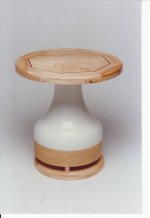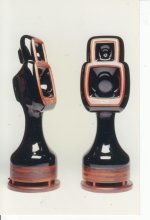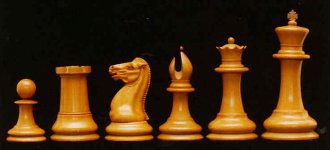Well, with the assumption that it's caused by stored energy in the treble with wobbly whizzers, titanium tweeters and so on, what is a cheap way to stop my ears from bleeding?
Probably better to go the other way around - get the system to do rock cleanly, and then it will do orchestral at elevated levels with tremendous impact and vitality - even Baroque will come alive!I don't know about that.
I have a small pair of stand mounts from a guy in Taiwan that image beautifully and sound fantastic with strings and orchestral music. However, they really do not do rick and pop any good. Thats a job the B&W's seem much better at . . .
What you will notice then is that the string tone will have that magic quality of life and drive that the real thing has, with zero edginess - "boring" is no longer a word that comes to mind!
Unless you build a dedicated listening room with bass horns in the basement, there is no good way if you want to make a good compromise between WAF and horns for low frequencies.
Here, the big enclosures i had before my divorce, crossover at 700 Hz, the bass driver is a 15" (38cm):
Here, the big enclosures i had before my divorce, crossover at 700 Hz, the bass driver is a 15" (38cm):
An externally hosted image should be here but it was not working when we last tested it.
Last edited:
VERY expansive, if you include alimony .Here, the big enclosures i had before my divorce,...
Keantoken,
There are plenty of soft dome and hard domes out there to choose from. Any of them will be better than a whizzer cone. I still see those whizzers on car speakers but wouldn't call any of them serious speakers to listen critically to music. One of the very small Neo magnet dome tweeters suspended in front of your little full ranger would be a better idea to me even if the dome tweeter did interfere with the radiation pattern of the cone driver.
There are plenty of soft dome and hard domes out there to choose from. Any of them will be better than a whizzer cone. I still see those whizzers on car speakers but wouldn't call any of them serious speakers to listen critically to music. One of the very small Neo magnet dome tweeters suspended in front of your little full ranger would be a better idea to me even if the dome tweeter did interfere with the radiation pattern of the cone driver.
Richard,
If you look carefully you will see the different grain sections of the stacked wood sections. Now machining the throat section down that deep on a lathe or even a cnc mill would be a real project. I made some Mahogany wood horns a long time ago, stacked boards glued together, but they were no round as Christophe's horn are made. Wood does have some really nice acoustic properties though when it is that thick, very non-resonant. That was one of the things that lead me to molded high density urethane foam construction many years ago, the closest thing to wood I could find.
If you look carefully you will see the different grain sections of the stacked wood sections. Now machining the throat section down that deep on a lathe or even a cnc mill would be a real project. I made some Mahogany wood horns a long time ago, stacked boards glued together, but they were no round as Christophe's horn are made. Wood does have some really nice acoustic properties though when it is that thick, very non-resonant. That was one of the things that lead me to molded high density urethane foam construction many years ago, the closest thing to wood I could find.
Yes. some of them, apart a little piece of wood on the back, screwed, to can fix the driver.Was that wave guide/horn made from a single block of wood !?!
But as said Kindhornman, difficult to machine. Hand made, no other way.
The expansion curve of the horn was an idea of one of my friends, spherical waves based, it was before the work of Le Clearch.
My actual version:

Last edited:
A work of art, Christophe. In audio, I pay litle attention to the looks, but every now and then, something like this comes along and demistrates that good sound can also look great.
You mean, something like this ... Katherine Jenkins – Beautiful Women | TheOriginalWingerA work of art, Christophe. In audio, I pay litle attention to the looks, but every now and then, something like this comes along and demistrates that good sound can also look great.
It seems to me that many here are not into really 'hi-end' audio. I can now more accurately evaluate my 'critics' as well as well as my supporters. Most of you just don't have a 'hi end audio system' to know whether I know or don't have useful suggestions for audio design.
For the record, my first hi fi design, in 1963 was with an Electrovoice 12" speaker that had a 'whizzer cone'. I put it into a large sheet of 'plaster board' and put it in an upper corner of a large room to give sound reinforcement for folk singers in a coffee house. I think that I knew as much then, as many here today, about sound reproduction. It was a good start, for the money. However, I graduated to an Acoustics Research AR-1, where I ultimately added a tweeter, then a K-horn, and finally WATT full range loudspeaker. What I have today is the latest version of the WATT (more or less). We need high resolution to make subtle distinctions, and in my opinion, a simple inexpensive speaker just does not do it well enough to make the electronics matter as much. No wonder why we often disagree about the importance of electronics, so often
For the record, my first hi fi design, in 1963 was with an Electrovoice 12" speaker that had a 'whizzer cone'. I put it into a large sheet of 'plaster board' and put it in an upper corner of a large room to give sound reinforcement for folk singers in a coffee house. I think that I knew as much then, as many here today, about sound reproduction. It was a good start, for the money. However, I graduated to an Acoustics Research AR-1, where I ultimately added a tweeter, then a K-horn, and finally WATT full range loudspeaker. What I have today is the latest version of the WATT (more or less). We need high resolution to make subtle distinctions, and in my opinion, a simple inexpensive speaker just does not do it well enough to make the electronics matter as much. No wonder why we often disagree about the importance of electronics, so often
John, this is where I have to strongly disagree with you - IME "a simple inexpensive speaker" most certainly can allow one to distinguish subtle variations in the electronics. Why that normally doesn't happen is that the driver is surrounded by cheap and nasty bits, back all the way up the chain - as befits the "cost" of the driver, 🙂. Bypass all those "bottlenecks", and the driver can shine ...
In this regard I have heard about half a dozen of the WATT family of speakers, and within the context of the systems they were part of they didn't do a thing for me.
In this regard I have heard about half a dozen of the WATT family of speakers, and within the context of the systems they were part of they didn't do a thing for me.
Electroj,
Originally when I started that design it was only the top section and I was laying on the beach in Hawaii thinking of a way to package the two top horns. I added the lower section later and yes we even discussed displaying that design and a larger version on a black and white floor to look like chess pieces.
John.
I'd have to agree with you on the point of some peoples references in loudspeakers. I couldn't disagree more with what Fas42 just said about using cheapo speakers to evaluate electronics let alone if music is recorded well. I can't believe we are still talking about whizzer cones in the 21st Century, it makes no sense to me, but neither do the full range designs I see or the SE tube amplifiers making 7 watts of power. At the same time it is probably good that you are older as I think those Focal tweeters that Wilson uses would drive most people who can hear the upper octave out of the room after a long enough time listening to those dome tweeters.
Originally when I started that design it was only the top section and I was laying on the beach in Hawaii thinking of a way to package the two top horns. I added the lower section later and yes we even discussed displaying that design and a larger version on a black and white floor to look like chess pieces.
John.
I'd have to agree with you on the point of some peoples references in loudspeakers. I couldn't disagree more with what Fas42 just said about using cheapo speakers to evaluate electronics let alone if music is recorded well. I can't believe we are still talking about whizzer cones in the 21st Century, it makes no sense to me, but neither do the full range designs I see or the SE tube amplifiers making 7 watts of power. At the same time it is probably good that you are older as I think those Focal tweeters that Wilson uses would drive most people who can hear the upper octave out of the room after a long enough time listening to those dome tweeters.
IME "a simple inexpensive speaker" most certainly can allow one to distinguish subtle variations in the electronics.
I've found that a lesser piece of equipment will often exaggerate or compound problems elsewhere in the system.
When it is improved, or replaced by a better component, those problems can recede back to their normal level.
Kindhornman, I agree with you about the focal tweeters. I have been tempted to put a sock on them, like I did with the WATT 1's. I even complained to Dave Wilson about it, BUT the problem seems to have resolved itself, probably thanks to Jack Bybee. However, I was recently attempting to add a super tweeter, but its gain was too low. I don't like speakers that cut off abruptly at 20KHz.
I find that inexpensive full range speakers can either be 'forgiving' or annoying. They just cannot handle the bandwidth.
It most certainly can also work that way - the process I'm always following is to minimise the level of clearly audible artifacts, and any which way to get there which brings results is valuable. For me, the underlying point of this exercise is the recording, and always is - the system is merely a means to an end; so long as the playback is drawing attention to its functioning, in any way, then it is not working "correctly" ... I have heard endless expensive systems bellowing at the top of their voices, "Aren't I fancy and impressive, look at me, look at me!!" ... this is a million miles from what I look for ...I've found that a lesser piece of equipment will often exaggerate or compound problems elsewhere in the system.
When it is improved, or replaced by a better component, those problems can recede back to their normal level.
With all the respect i have for you, John, you are boring.It seems to me that many here are not into really 'hi-end' audio. I can now more accurately evaluate my 'critics' as well as well as my supporters. Most of you just don't have a 'hi end audio system' to know whether I know or don't have useful suggestions for audio design.
Of course. It is very easy to find the best "hi-end" system. Just enter the hi-fi shop of a famous guru in uptown and ask, "What did you hold the most expensive." !...a simple inexpensive speaker just does not do it well enough...
Can-you explain why i run a very expensive horn, powered by a very expensive JBL driver together with a very cheap 12" for the low range ?
Focal tweeters ? if you are talking about those dome tweeters in kevlar with inverted domes, they just sound horrible and measure as well. And, on a pure technical point of view (speed propagation) an inverted dome is pure nonsense. This kind of dome cannot move in piston at 15000 Hz. the wave arrive in the center with some delay while the center is further from the listener.
This said, i agree full range speakers cannot work, for the simple reason they cannot run in piston on all the bandwidth. So what we hear is the material of the cone in the high medium and trebles.
Last edited:
- Status
- Not open for further replies.
- Home
- Member Areas
- The Lounge
- John Curl's Blowtorch preamplifier part II


